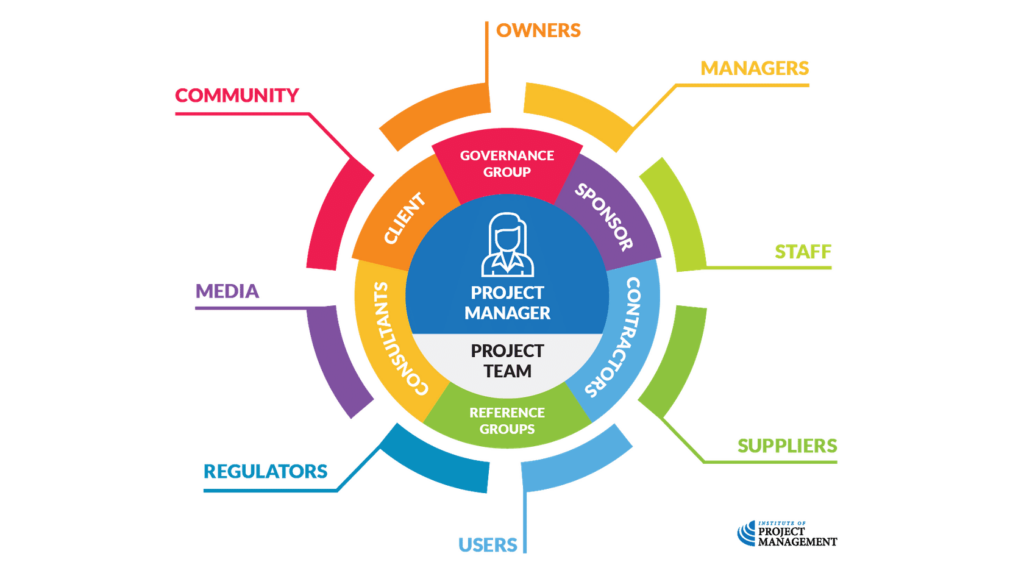The full circle
Indirect stakeholders are less involved but potentially impacted by project delivery.
They may also have considerable influence over the project, even if they do not choose to exercise it.
As such, they should be specifically identified by name and organization – the categories listed in the taxonomy below are just a quick reference to get you started.

Owners
The organization’s members or owners are impacted to the extent that the organization is diverting resources and investing its reputation, at least in some small way, in the project.
The owners are usually represented by a Board of Directors or equivalent committee.
Managers
The Chief Executive Officer (CEO) of the organization delivering the project may only have a passing or casual interest in it; however, as the direct link to the owners, they can significantly influence the project’s direction.
Department managers are also often required to divert staff and other resources to a project and may be suspicious, resentful, or even hostile.
A good project manager and sponsor will respect these interests and communicate progress and benefits to impacted managers regularly.
Staff
The staff of the performing organization not directly participating in a project may experience the same frustrations as their managers but without the authority to act.
Organizations should be aware of projectitis, the condition where project teams are glorified at the expense of operational staff, causing a rift or tension between the two.
Suppliers
Although contractors and consultants supply labor and knowledge to a project, other suppliers will also provide the materials, equipment, and infrastructure necessary for successful delivery.
As we move through this course, we will consider all supplier relationships as part of the procurement lifecycle.
Users
Although a project’s client may also be a user of its outputs, there is a difference between the two.
To illustrate this distinction, the client of a new medicine might be a pharmaceutical company, whereas users are the hospitals, family doctors, and patients who purchase, dispense and consume the medicine.
Each actor in the consumption chain has an aligned and often legally protected interest in the project, its output, and its outcomes.
Regulators
Government-appointed regulators, such as health and safety authorities, corruption watchdogs, and the courts, represent the interests of users and the community at large.
Project teams must ensure their processes and outputs meet legislative (as well as organizational) expectations.
Media
Special interest groups (such as unions and consumer advocates) and the media act as a further check on the limits of what projects can and cannot do.
Depending on the nature of your project, falling foul of the media might make it difficult to work in your industry again.
Falling foul of the regulators may land you in jail!
Community
Today, organizations are increasingly expected to consider the impact their projects will have on the wider community, including non-users of the product, service, or result produced.
Some obligations in this regard are enshrined in law, such as the liability of product manufacturers; however, others are broader and concern the brand or reputation of the commissioning firm.
Indirect, not insignificant
Given all the interests at play, you can imagine stakeholder management to be a complex and often difficult process.
When we include vague categories such as the community in this reckoning, we must wonder: is everyone a stakeholder?
Potentially – yes!
So how do we manage the often conflicting expectations of these incredibly diverse groups?
More provocatively: are some stakeholders more important than others?
This is something we will look at in the next topic.




